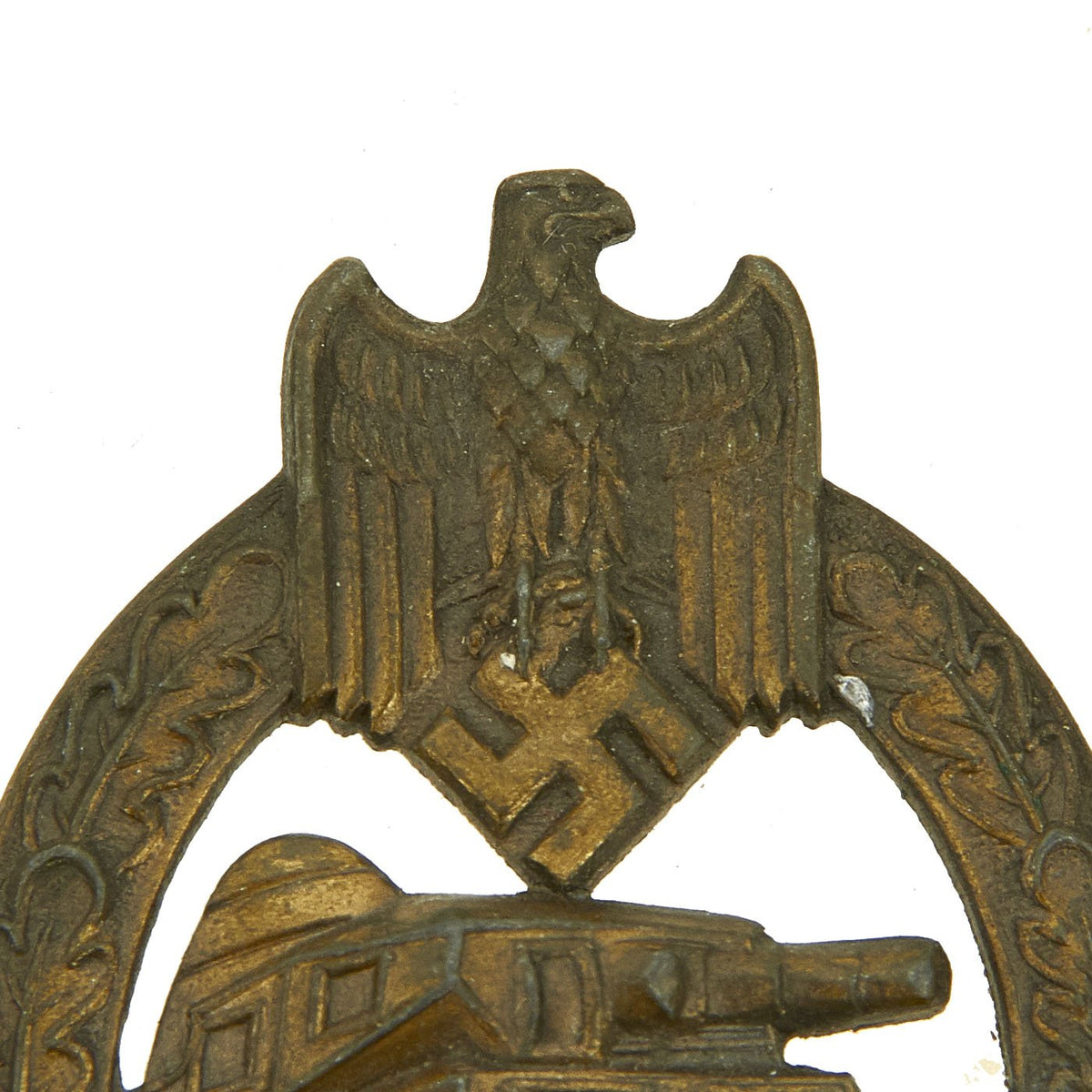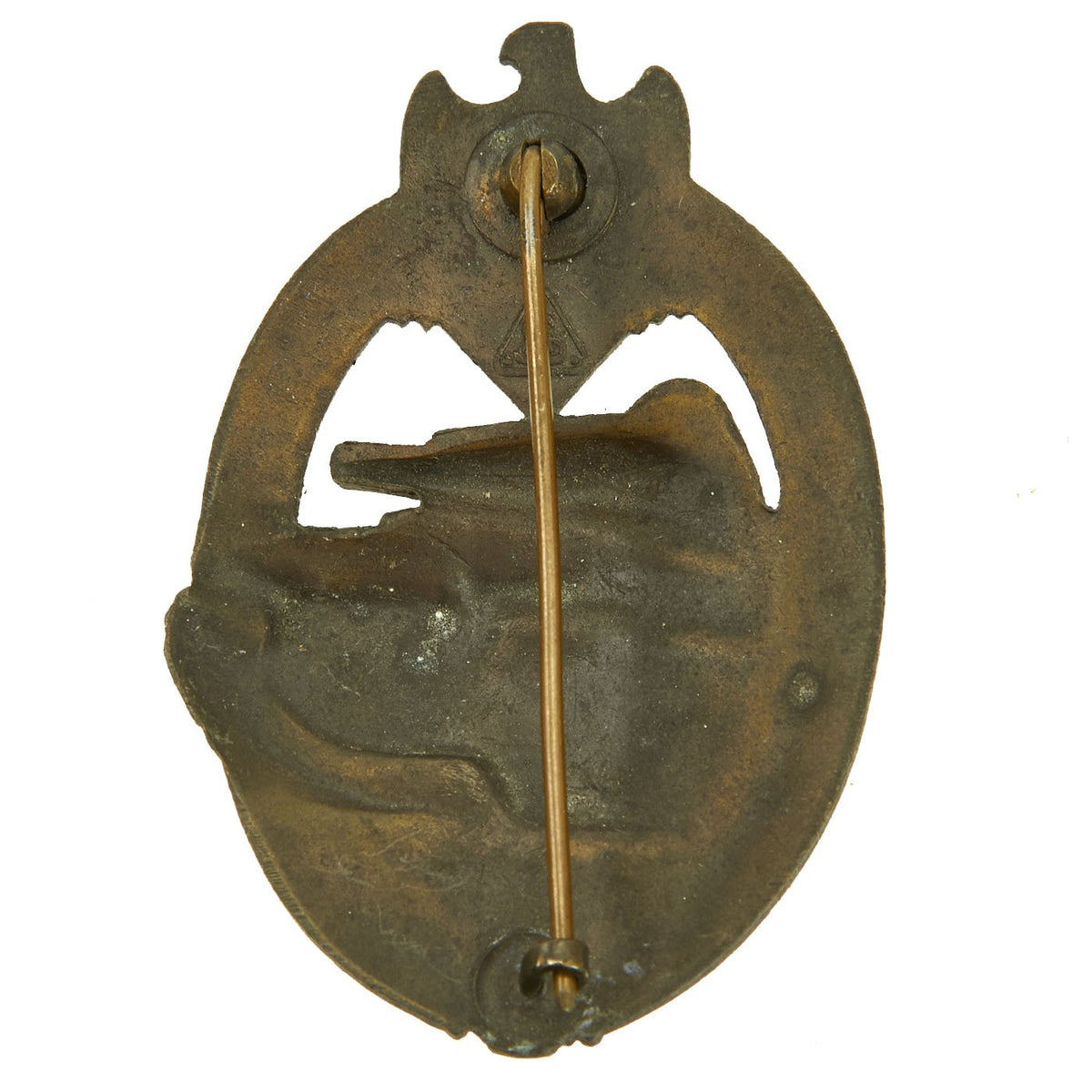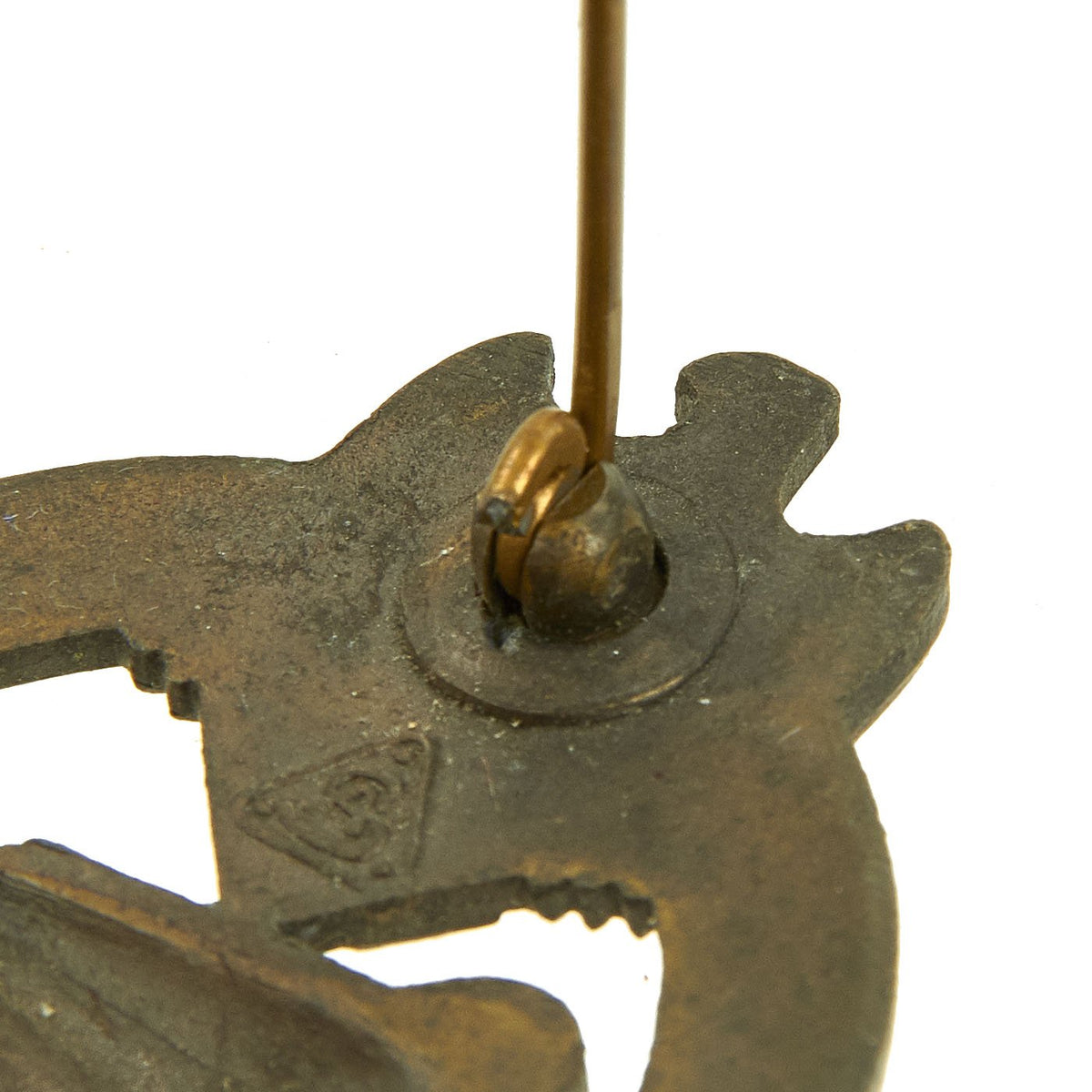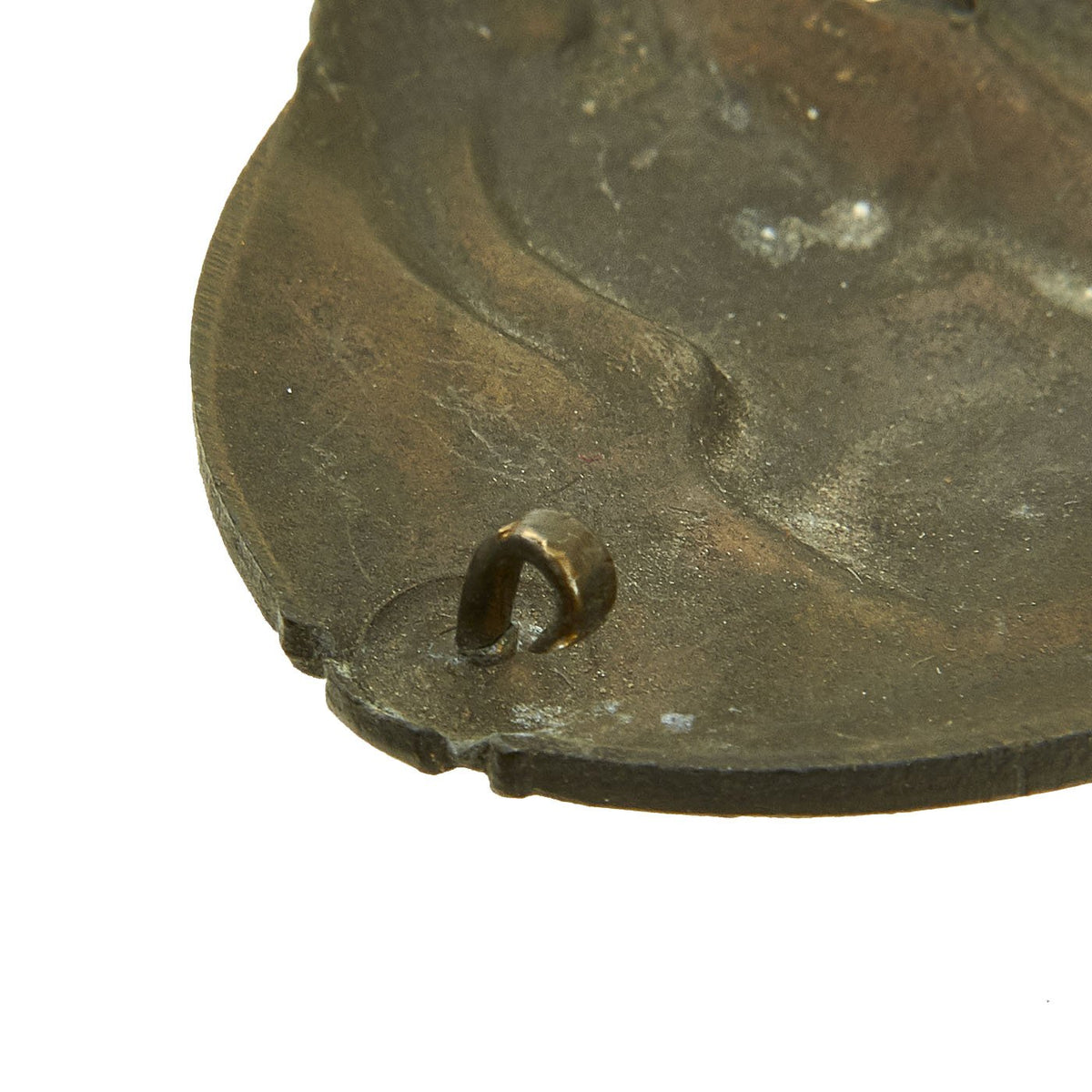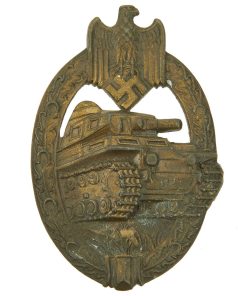Original German WWII Bronze Grade Panzer Assault Tank Badge by A. D. Schwerdt of Stuttgart Original Items
$ 325,00 $ 97,50
Original Items: Only One Available. The Panzer Assault Badge – PAB (German: Panzerkampfabzeichen) was a World War II German military decoration awarded troops in armored divisions. The award was introduced on 20 December 1939, in order to recognize the achievements of Panzer personnel who took part in armored assaults. It was designed by the Berlin firm of Wilhelm Ernst Peekhaus, and was instituted by order of Generaloberst Walther von Brauchitsch. On 6 June 1940, a separate class of the badge, in Bronze, was added in order to recognize the crews of armored vehicles other than tanks. The award document that came with it was the common type that had the particulars of the recipient (rank, name) and the authorizing signature of an officer. The Panzer Badge was worn on the left tunic pocket. The bronze version of the Panzer Badge was authorized for armored personnel and Panzer grenadier units equipped with armored vehicles. It was also to be presented to members of armored reconnaissance groups and rifle battalions of Panzer divisions. The authorization of these badges was usually done at a regimental or divisional level.
This fine example in Bronze grade is constructed of die-caste oval shaped zinc with a “scoop” back, covered with a bronze wash. Like most of these badges, the wash has degraded somewhat, but can still be seen on many areas of the front and back, much more than we usually see. The design is iconic, the front has a border of oak leaves tied at the base, a Heer-style national eagle clutching a mobile swas perches at the top of the wreath, a Panzerkampfwagen IV superimposed in the center on grassy ground, with its left tank track extending over the edge of the badge. The reverse plain with a vertical needle style pin, a solid plated hinge, and a crimped round wire catch. Just below the hinge is the Intertwined A S in a Triangle logo of A. D. Schwerdt of Stuttgart.
The badge measures 2 1/2″ x 1 3/4″, and is really in great condition. Ready to add to your collection!
The term panzer division (German: Panzerdivision) as commonly used in English language refers almost exclusively to the armored (tank) division in the army branch of the Wehrmacht and of NSDAP Germany during World War II. The panzer divisions were the key element of German success in the Blitzkrieg operations of the early years of the war. Later the Waffen-SS formed panzer divisions, and even the Luftwaffe fielded a panzer division, the Herman Goring Division. The term Panzerdivision is still used in today’s Heer of the Bundeswehr (for example 1. Panzerdivision). In German speaking countries the term is not immediately associated with the Wehrmacht as it is in English speaking nations, as the word simply means ‘armored division’ and has no additional connotation.
A panzer division was a combined arms formation, having both tanks (German Panzerkampfwagen, “armored fighting vehicle”, usually shortened to “Panzer”) and infantry as organic components, along with artillery, anti-aircraft, signals, etc. However, the proportions of the components of a panzer division changed over time.
Fast Shipping with Professional Packaging
Thanks to our longstanding association with UPS FedEx DHL, and other major international carriers, we are able to provide a range of shipping options. Our warehouse staff is expertly trained and will wrap your products according to our exact and precise specifications. Prior to shipping, your goods will be thoroughly examined and securely secured. We ship to thousands clients each day across multiple countries. This shows how we're dedicated to be the largest retailer on the internet. Warehouses and distribution centres can be located throughout Europe as well as the USA.
Note: Orders with more than one item will be assigned a processing date depending on the item.
Before shipping before shipping, we'll conduct a thorough inspection of the items you have ordered. Today, the majority of orders will be delivered within 48 hours. The delivery time will be between 3-7 days.
Returns
The stock is dynamic and we cannot completely manage it because multiple stakeholders are involved, including our factory and warehouse. So the actual stock may alter at any time. It's possible that you may not receive your order once the order has been made.
Our policy is valid for a period of 30 days. If you don't receive the product within 30 days, we are not able to issue a refund or an exchange.
You can only return an item if it is unused and in the same state as the day you received it. You must have the item in its original packaging.
Related products
Uncategorized
Uncategorized
Uncategorized
Uncategorized
Uncategorized
Uncategorized
Uncategorized
Band of Brothers ORIGINAL GERMAN WWII Le. F.H. 18 10.5cm ARTILLERY PIECE Original Items
Uncategorized
Uncategorized
Uncategorized
Armoured Fighting Vehicles of the World: AFVs of World War One (Hardcover Book) New Made Items
Uncategorized
Uncategorized
Uncategorized
Uncategorized
Australian WWII Owen MK1 Machine Carbine SMG Custom Fabricated Replica with Sling Original Items
Uncategorized
Uncategorized
Angolan Rebel 1970s era 60mm Inert Display Mortar from Angolan Civil War Original Items
Uncategorized

